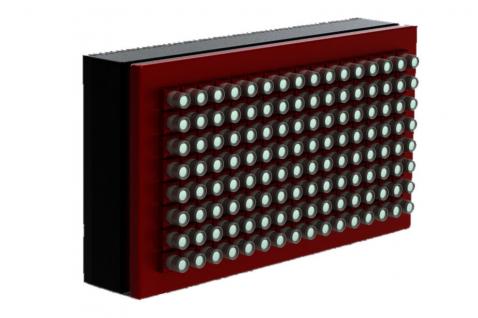GigaPixel Camera Array

Overview
EOPTIS' super-resolution camera allows the capture of images of moving subjects at an unprecedented level of detail. Compared to other approaches based on overlapping adjacent portions of the scene shot in subsequent instants by moving the camera itself, EOPTIS' camera is capable of instantly acquiring the full-resolution image. This feature and the high bandwidth for data transfer allow a frame rate comparable with standard cameras. The super-resolution camera is built from an array of mid-resolution cameras. This architecture can be easily adapted to make the array operate as a single camera that multiplies the performance of the base elements or behaves like a set of independent but synchronised cameras looking at the same scene from different points of view (click here for a technology insight).
Features
Customizable parameters
- Resolution from 100 to 1000 Mpixel and beyond
- Number of base cameras or imaging sensors (from 16 to more than 200)
- Spacing and spatial arrangement of the cameras or sensors
- Frame rate (1 to 50 frame/s)
- Optics focal length (Field of view)
- Orientation of optical axis
Applications
- High-resolution imaging
- 3D shots for virtual reality
- Multiple shots from various point of views and generation of virtual point of views
- Scientific analysis of moving subjects
Know-how
- Large array of imaging sensors
- Mixed multi-FPGA and multi-processor architecture
- Ultra-high speed data interfaces
- State-of-the-art PCB design (10GHz signals on 20+ layers)
Tecnologia
Camera arrays are based on a set of independent cameras spatially arranged on a known pattern, looking at the same scene. The array elements can be either standard industrial-grade cameras or an array of imaging sensors laid out on PCBs. Sensing elements are mastered by a set of FPGA and processors, that triggers the acquisitions and routes the video data stream to the high-speed system interface.
Multi-camera systems can operate in different ways depending on the arrangement of the cameras. If the cameras are placed close together, then the system effectively functions as a unique synthetic camera with a single centre-of-projection and unprecedented performance along one or more selected imaging parameters. Resolution, signal-to-noise ratio, dynamic range, depth of field, frame rate, or spectral sensitivity can be enhanced by multiplying the performance delivered by each camera. If the cameras are placed at greater distance, then the system operates as a multiple-centre-of-projection camera. This set-up allows the capture of light-field data, that enables virtual refocusing of the image after the shot. Finally, if the cameras are placed at an intermediate spacing, then the system functions as a single camera with a large synthetic aperture, which allows us to see through partially occluded environments.
EOPTIS EOM
EOPTIS combines know-how in multidisciplinary fields with innovative technological platforms. These are the ideal tools for the development at an affordable price of cutting-edge custom system.
- We turn a concept into an industrial solution that can be manufactured at the target cost and quantities
- We engineer prototypes and technology demos, lowering manufacturing costs and improving performance
- We customise our products available on catalog
Any custom product is designed to be afterwards manufactured by EOPTIS, both in small and large quantities. EOPTIS aims to become your one-stop shop from design to direct production.
